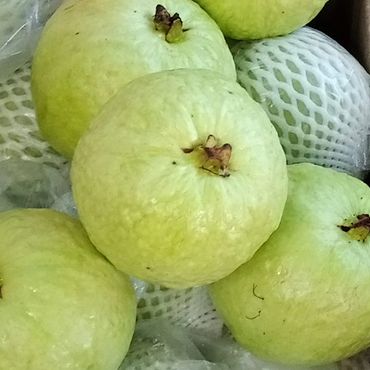Welcome To Revolving Earth 🌍🌍 Call Us On 9670000455, 8176888883 For Urgent Respons
Guava Plant Nursery - Guava Plant Supplier

Guava Plant Nursery Supplier
Guava plant supplier,wholesale Guava Plant Nursery
WHOLESALE GUAVA PLANT NURSERY, GUAVA PLANT SUPPLIER ( Hybrid,Grafted Plants) In Uttar pradesh, Gujarat, Himachal, Haryana, Punjab, Uttarakhand, Jammu, ,Chhattisgarh, Delhi, Rajasthan, Uttar pradesh, Madhya pradesh , Bihar, Jharkhand, West bengal, Odisha, Maharashtra , Karnatka . Tissue Culture Guava Plant Supplier

Wholesale Guava plant nursery - Guava Plant Supplier
WHOLESALE GUAVA PLANT NURSERY , GUAVA PLANT SUPPLIER
Tissue Culture Guava Plant Nursery: How To Grow And Care For Guava Fruit Plant
Guava fruit trees (Psidium guajava) are not a common sight in North America and need a decidedly tropical habitat. In the United States, they are found in Hawaii, the Virgin Islands, Florida and a few sheltered areas in California and Texas. The trees are very frost tender and will succumb to a freeze when young, although adult trees may survive short periods of cold.
That said, the plants are attractive and produce deliciously rich, sweet fruits that are excellent fresh or in desserts. Given enough guava tree information, it is possible to grow these small trees in a greenhouse or sunroom and reap the benefits of their Vitamin C rich fruits.
Guava Plantation and Guava Tree Information
The guava fruit grows on a small tree with a wide, short canopy and a sturdy single to multi-stemmed trunk. The guava tree is an interesting plant with mottled greenish bark and long 3- to 7-inch serrated leaves. Guava trees produce white, 1-inch flowers that yield to small round, oval or pear shaped fruits. These are more accurately berries and have soft flesh, which may be white, pink, yellow or even red and varies in taste from acidic, sour to sweet, and rich depending on variety
The guava plants thrive in any soil with good drainage and full sun for best flowering and fruit production.
Guava fruit trees are tropical to sub-tropical and may achieve 20 feet in height. Growing guavas require cold protection and is not suitable outdoors in most zones of the U.S. They must have shelter from freezing winds, even in sunny warm climates where occasional icy temperatures occur.
Caring for a Guava Tree
If you are lucky enough to live in one of the regions where guava plants grow outside, the tree should be planted in well-drained soil where its roots have room to spread.
Fertilize growing guavas every 1 to 2 months while young and then 3 to 4 times per year as the tree matures. Guava trees need a high amount of nitrogen, phosphoric acid and potash, along with some magnesium for maximum fruit production. An example is a formula of 6-6-6-2, worked into soils just prior to the onset of the growing season and then evenly spaced out 3 times during the growth period. Tissue culture, Guava Plant Supplier, Wholesale Guava Plant Nursery. Delhi Mumbai Lucknow
Wholesale Guava plant nursery - Guava Plant Supplier
Wholesale Guava plant nursery - Guava Plant Supplier
Photo Gallery






CONTACT US
Contact Us
Better yet, see us in person!
We love our customers, so feel free to visit during normal business hours.
Hours
Open today | 09:00 am – 05:00 pm |
Copyright © 2025 MANGO, BAMBOO ,MAHOGANY,TEAK PLANT SUPPLIER - All Rights Reserved.
This website uses cookies.
We use cookies to analyze website traffic and optimize your website experience. By accepting our use of cookies, your data will be aggregated with all other user data.